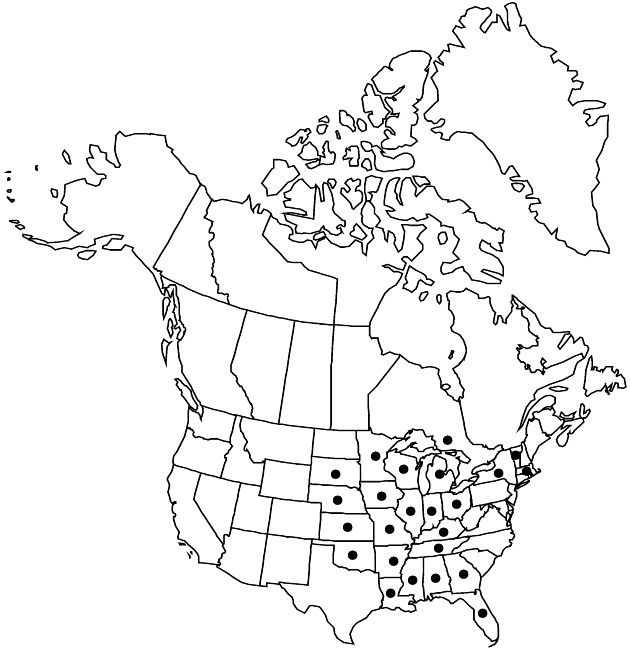Difference between revisions of "Ratibida pinnata"
Bull. Torrey Bot. Club 24: 410. 1897.
FNA>Volume Importer |
FNA>Volume Importer |
(No difference)
| |
Revision as of 18:47, 24 September 2019
Perennials, to 125+ cm; fibrous rooted (arising from stout rhizomes or woody caudices). Leaves 5–40 × 3–15+ cm, pinnatifid to pinnate, lobes 3–9, narrowly lanceolate to ovate, 1–15 × 0.2–3.5 cm, faces strigose, gland-dotted. Heads mostly 1–12, held well beyond leaves. Peduncles 3–27+ cm (ribs tan, prominent). Phyllaries 10–15, outer linear, 3–15 × 1–3 mm, inner lanceolate-ovate, 3–6 × 0.7–3 mm. Paleae 1.2–5 × 1–1.8 mm, resin glands linear to oblanceolate, 2–3.3 mm. Ray florets 6–15; corollas yellow, 2.5–3.8 mm, tubes ca. 1–3 mm, hirsute, laminae linear-elliptic to oblong-oblanceolate, 16–60 × 4–15 mm. Discs ellipsoid to globular or ovoid, 10–25 × 10–18 mm. Disc florets 100–200+; corollas greenish yellow, often purplish distally, 2.5–3.8 mm; style branches ca. 1.8 mm, proximal 1/2 stigmatic, apices subulate. Cypselae linear-oblanceoloid, 2–4 × 1–2.3 mm, margins usually glabrous, sometimes adaxial ciliate; pappi 0 or of 1–2 toothlike projections. 2n = 28.
Phenology: Flowering May–Oct.
Habitat: Prairies, woodland openings and borders, limestone outcrops
Elevation: 10–300 m
Distribution

Ont., Ala., Ark., Fla., Ga., Ill., Ind., Iowa, Kans., Ky., La., Mass., Mich., Minn., Miss., Mo., Nebr., N.Y., Ohio, Okla., S.Dak., Tenn., Vt., Wis.
Discussion
Selected References
None.
